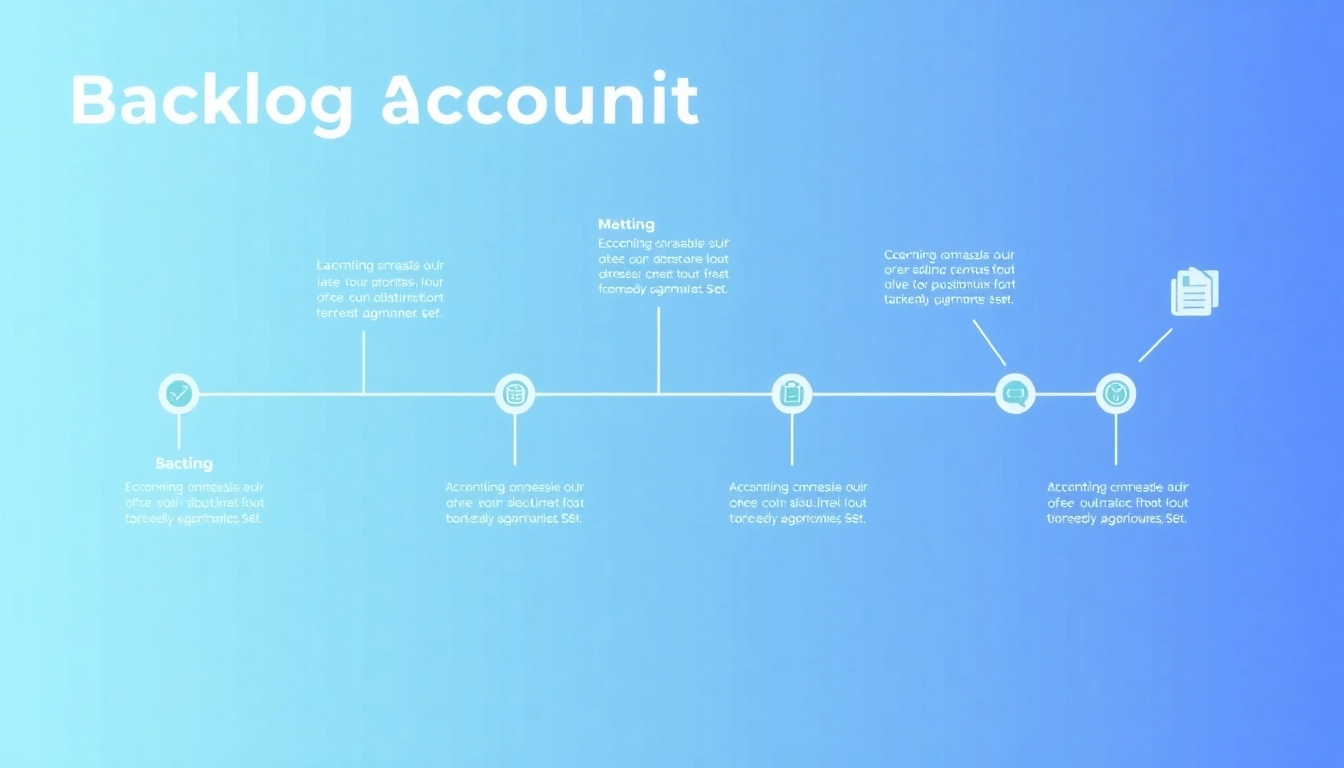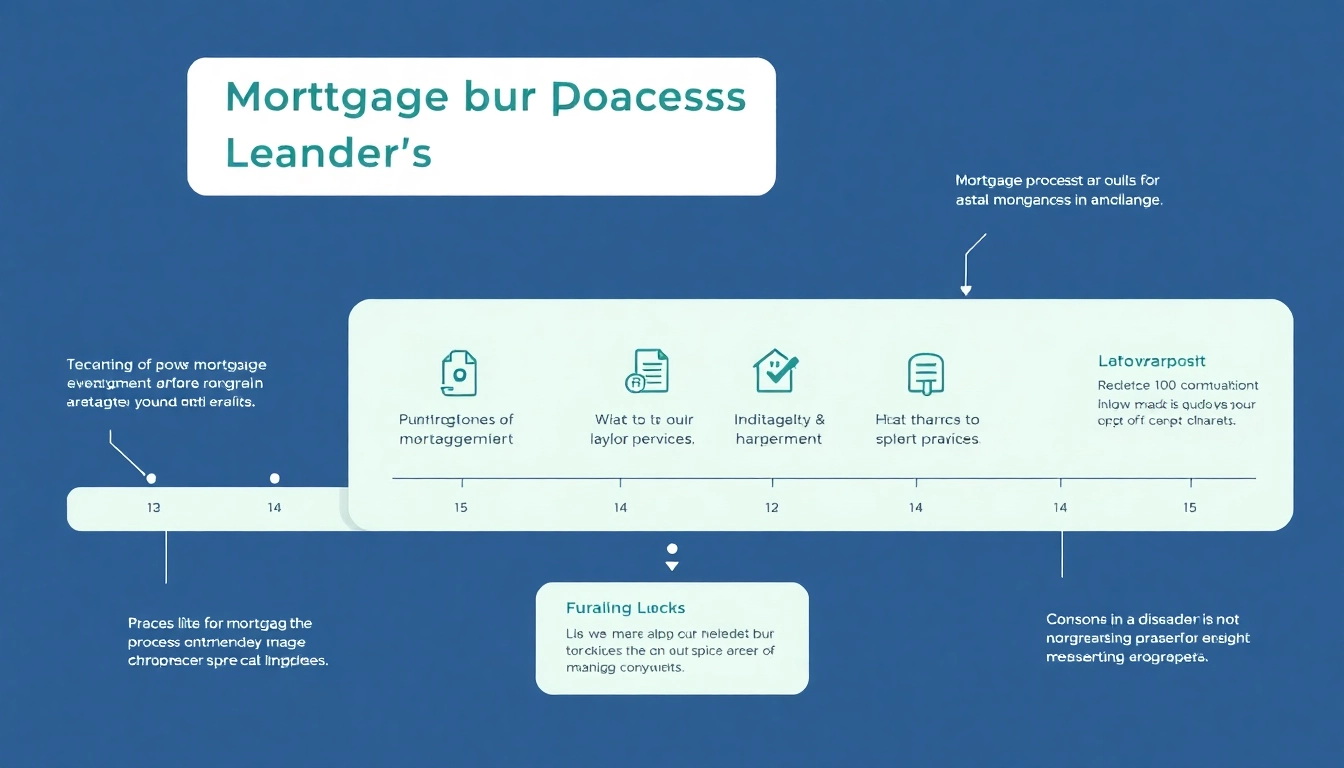Understanding Backlog Accounting
What is Backlog Accounting?
Backlog accounting is a specialized approach to financial management that deals with the measurement and analysis of unfulfilled tasks, orders, or services that are pending completion. These backlogs can indicate a company’s operational efficiency and serve as a crucial metric for assessing potential revenue loss or operational bottlenecks. Unlike traditional accounting practices that primarily focus on completed sales or inventory, backlog accounting allows businesses to view their outstanding obligations, helping them anticipate future workload and revenue projections.
Importance of Backlog Accounting in Business
In today’s fast-paced business landscape, understanding the intricacies of backlog accounting can offer substantial strategic advantages. It helps businesses in several ways:
- Forecasting Revenue: By analyzing backlogs, organizations can estimate future income based on outstanding orders and commitments.
- Resource Allocation: Understanding which tasks are pending allows companies to allocate their resources efficiently, ensuring that projects are completed on time.
- Identifying Bottlenecks: Backlogs can highlight inefficiencies in processes, enabling management to take corrective actions.
- Customer Satisfaction: Quickly addressing backlogs can improve service levels, leading to higher customer satisfaction and retention rates.
Common Challenges in Implementing Backlog Accounting
Despite its advantages, several challenges can arise when implementing backlog accounting effectively:
- Data Management: Accurately tracking backlog data can be cumbersome, especially for larger organizations.
- Integration Issues: Incorporating backlog accounting into existing systems may require significant adjustments to processes and procedures.
- Lack of Visibility: Without dedicated tools and processes, management may lack the insights needed to identify backlogs effectively.
- Employee Resistance: Employees accustomed to traditional accounting practices may initially resist transition to backlog accounting methodologies.
Key Components of Backlog Accounting
Essential Tools for Backlog Accounting
Implementing backlog accounting successfully requires the use of various tools designed to facilitate data capture and analysis. Some essential tools include:
- Project Management Software: Tools like Asana and Trello can help visualize tasks and track progress, allowing for effective backlog management.
- Customer Relationship Management (CRM) Systems: CRMs like Salesforce offer insights into customer orders that can help manage backlogs.
- Accounting Software: Solutions like QuickBooks and Xero allow businesses to keep tabs on outstanding invoices, assisting in backlog tracking.
Tracking Metrics for Accurate Backlog Accounting
To ensure effective backlog accounting, organizations should focus on these key metrics:
- Backlog Turnover Rate: This metric measures how quickly backlogged items are completed relative to the overall workload.
- Average Age of Backlog: This reflects how long items have been pending and helps in prioritizing urgent tasks.
- Customer Wait Time: Tracking the time customers wait for services can be vital to enhancing satisfaction and operational efficiency.
- Error Rate: A measure of mistakes made in processing backlogged items can help in assessing the quality of backlog management.
Role of Software Solutions in Backlog Accounting
Software solutions play a critical role in backlog accounting by automating data capture and reporting. Advanced analytics tools can provide real-time insights into backlog performance and operational efficiency, allowing for data-driven decision making. Integrating software solutions enables organizations to track every task efficiently, identify areas for improvement, and streamline processes.
Best Practices for Optimizing Backlog Accounting
Implementing Effective Processes in Backlog Accounting
To optimize backlog accounting, businesses should establish well-defined processes. Key practices include:
- Regular Updates: Schedule frequent reviews of the backlog to adapt to changes and ensure the accuracy of data.
- Prioritization Strategies: Develop a system for prioritizing tasks based on urgency and importance, helping teams focus on high-impact areas.
- Clear Communication: Foster open lines of communication among teams to facilitate rapid information sharing regarding backlogged tasks.
Engaging Teams for Better Backlog Accounting
Engagement from all team members is essential for successful backlog accounting. Companies can achieve this by:
- Training and Workshops: Regular training sessions can help reinforce the importance and methodology of backlog accounting.
- Recognition Programs: Acknowledge team members who effectively manage backlogs, fostering a culture of accountability.
- Feedback Mechanisms: Implement channels for team members to provide feedback on the backlog accounting process, allowing for continuous improvement.
Regularly Reviewing Backlog Accounting Results
Regular reviews of backlog accounting results help in identifying trends and informing decision making. Organizations should:
- Establish Key Performance Indicators (KPIs): Monitor KPIs related to backlog management for deeper insights into efficiency.
- Conduct Monthly Reviews: Assess backlog performance at fixed intervals to make timely adjustments based on findings.
- Utilize Dashboards: Dashboards can offer a visual representation of backlog status, making it easier to interpret data trends and performance measures.
Case Studies: Successful Backlog Accounting
Industry Examples of Backlog Accounting Implementation
Real-world implementations can offer valuable insights into how backlog accounting can significantly impact an organization. For instance, a manufacturing firm that adopted backlog accounting streamlined its production lines by identifying constraints, resulting in a 20% increase in throughput within six months. Additionally, a tech startup effectively utilized backlog accounting to refine product development workflows, which allowed them to reduce delivery times by two weeks on average.
Lessons Learned from Backlog Accounting Failures
Not all implementations are successful; several lessons can be gleaned from organizations that faced challenges with backlog accounting:
- Insufficient Training: Many companies encountered issues when their teams had not been adequately trained on new backlog processes.
- Lack of Visibility: Some organizations found that without robust reporting, their backlog results were unclear, leading to poor decision making.
- Resistance to Change: Many staff members were reluctant to abandon old practices, illustrating the need for buy-in when implementing backlog accounting.
Improving Business Outcomes through Backlog Accounting
Effective backlog accounting can lead to substantial business improvements. A service-based company, for instance, saw its customer satisfaction ratings rise by 30% after implementing a structured backlog accounting process. By prioritizing and addressing customer requests rapidly, they could enhance their service delivery significantly.
Future Trends in Backlog Accounting
Technological Advancements Impacting Backlog Accounting
As technology continues to evolve, so too will the methods and tools used in backlog accounting. Here are some trends to watch:
- Artificial Intelligence: AI-driven analytics tools will provide deeper insights into backlog trends and help predict future workloads.
- Automation: Increased automation in task management may streamline backlog handling, reducing manual errors and improving efficiency.
- Real-Time Data Analysis: Businesses can expect advancements in real-time data analysis tools that allow for immediate tracking of backlog changes.
Changing Business Environments and Backlog Accounting
The global business environment is constantly evolving. Changes in customer expectations, economic conditions, and regulatory requirements will significantly impact backlog accounting practices. Organizations need to remain agile and adapt their backlog strategies to meet these shifting demands effectively.
Preparing for the Future of Backlog Accounting
Preparation for the future of backlog accounting requires businesses to stay updated on emerging trends and continually refine their methodologies. This may involve investing in new software solutions, training personnel on advanced techniques, and fostering a culture of ongoing improvement. By doing so, businesses can enhance their backlog management, ensuring they remain competitive in an increasingly dynamic marketplace.












Leave a Reply